Lisa M. Lilly's Blog, page 12
February 28, 2018
Mean Characters Or Reality?
Last week I wrote about the fictional women mentors I created for my protagonist in The Awakening Series.
Writing about those women was pretty easy because I had a strong picture of each of them as I began the first book. More challenging for me was the part of Book 1 that was more grounded in real life.
Specifically, how Tara’s friends, boyfriend, and family would react to her news that she was pregnant, but had never had sex and didn’t know how it had happened.
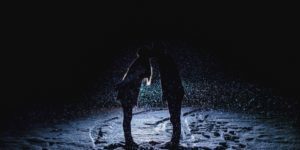
Being true to those characters was important to me.
My favorite occult and horror stories are the ones where in the beginning it’s unclear whether something truly supernatural is happening or whether the characters are misunderstanding the situation or being Gaslighted by someone.
Also, I wanted the ways Tara’s friends and family reacted to be realistic.
After all, if your college-aged daughter, sister, or girlfriend claimed she was pregnant but never had sexual intercourse, your first thought wouldn’t be “Oh, obviously she has a supernatural pregnancy.”
Like Tara’s friends and family, most of us would feel we at least needed to consider that the young woman might be repressing something, lying because she didn’t want to identify the father or for some other reason, or had become delusional. Our first thought would not be that she had a supernatural pregnancy.
Life Is Hard
Writing fiction is all about making life hard for your main character.
One way I did that was to create Tara as a character who is not religious. She doesn’t believe in any sort of god.
Her stepdad (whom she has always thought of as her dad), though, is very religious. His daughter’s virgin pregnancy seriously challenges his faith.
In one way, he knows he ought to be open to the idea because he believes that a virgin pregnancy occurred in the past and that Jesus might return. Yet logic tells him that such a thing is impossible, and if it were possible, the virgin mother would not be an atheist.
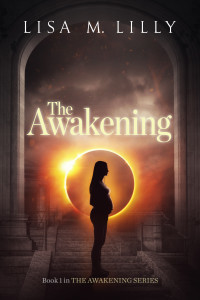
Tara and her mom, too, have a lot of tension even before the pregnancy. Like many mothers with oldest daughters, the two clash over Tara’s choices and aspirations as Tara becomes an adult.
Tara’s mother also fears that Tara is seeking attention because her littlest sister is very ill, and Tara stepped in to help parent the other kids.
A lot of Tara’s mother’s anger towards Tara is actually fear that she has failed her daughter and caused her to have some sort emotional or mental illness.
The Boyfriend And The Best Friend
At the beginning of Book 1 Tara plans to marry her boyfriend when she finishes college and before she starts medical school. Knowing how hard it is to be a parent, though, she’s very concerned about not getting pregnant, so she refrains from intercourse.
Minor Spoiler Below:

Her boyfriend is not too happy about that decision and his reaction to her pregnancy reflects that. While the way he treats her is less than ideal, I felt it was realistic that he wouldn’t jump to the conclusion that her pregnancy was supernatural. At that point, Tara herself didn’t believe that and was still seeking medical answers.
To make life harder for Tara, her best friend is also the boyfriend’s sister.
Tara and her friend also have a sibling -like relationship. Tara’s friend feels like she has always been the one who has messed up while Tara has been super-responsible. So it’s hard for her to process what Tara is telling her and easy for her to assume that Tara is just having a hard time accepting responsibility for her actions now that she’s done something others might see as a mistake.
Reflections
Tara’s friends’ and family members’ feelings about Tara’s predicament reflect more about themselves than about her.
Her dad, deeply religious, plunges headlong into a crisis of faith.
Her boyfriend assumes she’s behaved in a way that reflects his own life choices.
The one person who totally supports Tara from Day One is her littlest brother. Due to his age and personality he is open to and excited about the world. He sees odd and wondrous things in it all the time, and so easily believes Tara has a supernatural pregnancy.
Overall, I hope I showed realistic conflict between Tara and her friends and family rather than simply giving her friends and family who were unpleasant people (though, OK, maybe her boyfriend falls into that category).
That’s all for today. See you again next Wednesday when I’ll talk about why so many women loved The Da Vinci Code and how that inspired me.
Lisa
The post Mean Characters Or Reality? appeared first on Lisa Lilly.
February 20, 2018
Women Mentors, Aging, And The Awakening Series
When I graduated law school in 2000 (this relates to fiction, I promise), law school classes had only recently reached the point where roughly half the students were women and half men. For a lot of reasons, though, in actual practice men dominated certain areas.
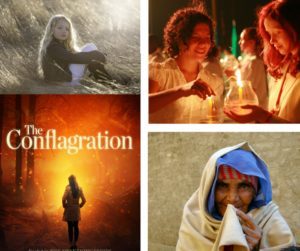
This was true in my area of practice, civil litigation.
I’d been a lawyer for about a year when I had a case where the young lawyer on the other side also was a woman. When we went to court, often we were the only two women lawyers in the courtroom.
We got to talking about that. After the case was over, we stayed in touch and became good friends, often sharing our experiences working for male partners.
Real Life Women Mentors v. Women in Fiction
Later in my career I explored starting my own practice (which I did about a year later). Women solo lawyers generously shared their time and advice on everything from how much I should pay to rent an office to how long it took them to get their practices into the black to how to find clients and learn new areas of law when needed.
Many men also served as mentors, but I mention the women because when I read novels and particularly when I watched movies I didn’t see my experience reflected. This was especially so in the genres of thriller, suspense, and horror.
When I did see a woman character, she was typically surrounded by men. If there were other women, they were presented as rivals either for men’s affection or for professional advancement.
The other thing that bothered me was how rarely women of different ages were depicted.
Again, this was most obvious in movies where there were few roles for women who looked to be older than late 30s. But I also noticed it in books where “middle-aged” seemed to serve as a shorthand for dumpy, frumpy, and/or dissatisfied or boring.
Age and Women in Fiction
Note: Minor spoilers ahead for Book 1 in the series.
When I wrote The Awakening, most important to me was telling a good story. I also wanted to reflect the variety of female friendships and mentors that exist in the real world, but seem invisible to many writers and directors.
My protagonist, Tara, is a college student. Nanor Kerkorian is old enough to be her grandmother.
After a short period of distrust on both sides, Nanor gives Tara information, advice, and guidance. The two don’t always agree, but they develop a relationship of mutual respect.
Tara finds great value in Nanor’s many decades of experience and accumulated wisdom.
Nanor tries to persuade Tara to adopt her views on Tara’s mystical pregnancy, but she respects Tara’s intelligence and determination even when she thinks it is wrongheaded.
Nanor’s granddaughter Kali, who is younger than Tara, also serves as a guide for Tara. She is the one who first connects Tara and Nanor, risking Nanor’s disapproval in doing so.
Former nun and professor of religious studies Sophia Gaddini also serves as a mentor to Tara. Sophia is in her mid-30s, so she is about 10 or 12 years older than Tara.
In the very first draft of The Awakening, Sophia had the thankless job of conveying historical information about the origins of religion and Christianity and about female deities. Basically, she got to speak all the research I did. I eventually cut almost all of that to keep the pace of the book fast.
What’s left of Sophia’s information, though, is what draws the most questions from readers who want to know how accurate it is. (Very, other than my embellishments of Andrew of Crete and creation of the Brotherhood of Andrew.)
What I love most about Tara’s and Sophia’s relationship is how it grows and develops.
Sophia is the first stranger to keep an open mind when Tara tells her about her virgin pregnancy. Initially, Tara relies on Sophia for practical help and emotional support. But as the books go along, the two women develop a more mutual friendship.
I loved writing a series of thrillers that featured varied and dynamic women characters who both conflict with and cooperate with one another, as happens in real life. Though The Awakening Series is now completed, I’m sure I’ll revisit that theme in future books.
If you’d like bonus materials about The Awakening Series, including deleted scenes, join my Reader’s Group.
The post Women Mentors, Aging, And The Awakening Series appeared first on Lisa Lilly.
February 14, 2018
Facing The Unknown
Unknowns and gray areas have always raised anxiety for me in real life, yet those places are where everything interesting happens in fiction.
In Rosemary’s Baby, which I wrote about last week (and which is one of my favorite books), the antagonists clearly fall into the evil camp from the readers’ perspective, no matter how they try to justify their actions to themselves.
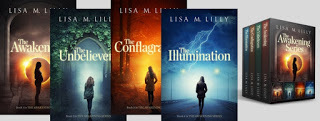
In contrast, in the most well known virgin pregnancy story in the western world, that of the Virgin Mary, the reader is meant to see the pregnancy as an unqualified good. Mary is portrayed, to the extent she is featured at all, as troubled at first but then quickly honored and grateful for her role. (It helps that an angel explains everything to her.)
For The Awakening Series, I put Tara, the protagonist, smack in the middle of those extremes. The many unknowns in her situation struck me as more realistic, and more anxiety-provoking, than Mary’s story.
Things happen to almost all of us that we didn’t expect and didn’t ask for. Rarely is there a reason for them that makes any sense, yet we need to deal with them.
Often those events change us and the course of our lives in ways people around us struggle to understand.
Also, the unknown often poses the greatest emotional challenge. Fearing you’ll lose your job or a loved one can become so painful and scary that it’s almost worse than things that actually happen. Once something occurs, I can take steps to handle it no matter how bad. Beforehand, though, I can only imagine how awful it will be.
As Mark Twain said, “I’ve lived through some terrible things in my life, some of which actually happened.”
How different people deal with the unknown also causes great conflict, particularly when it comes to religious faith.
Some people find in religion definite answers, if only to say “it’s God’s will.” Others find that same concept deeply disturbing, as it can sound as if some all-powerful being targeted them for misfortune.
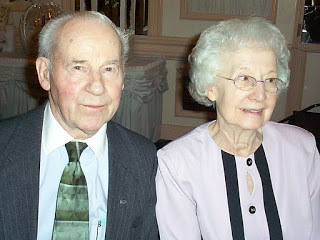 My mom & dad at their 50th anniversary.I personally struggled with the things people say in the wake of tragedy after my parents were killed by a drunk driver.
My mom & dad at their 50th anniversary.I personally struggled with the things people say in the wake of tragedy after my parents were killed by a drunk driver.People said what they may have meant to be helpful, but in words that reflected what they needed to believe to feel all right about the world again. Often their words sparked anger and frustration in me, yet I felt unable to express that because I didn't want to be rude or hurtful to those who were likely trying to offer sympathy in the best way they knew how.
Though it's an entirely different situation, those feelings and experiences are part of the conflicts in The Awakening series, as well meaning people of strong but different faiths and world viewpoints clash with one another.
I suppose all writers deal with their demons in one way or another through what they write. The gray areas—and the unknowns—these are mine.
February 7, 2018
How Rosemary’s Baby Inspired The Awakening Series
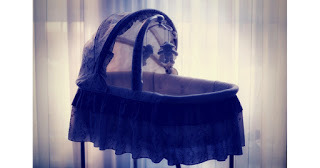
Rosemary’s Baby (by Ira Levin) is one of my favorite books, and it’s part of what inspired The Awakening Series.
It’s the kind of quiet horror that I love. The story is disturbing because of gradually building suspense and looming evil rather than blood and guts.
Other things I love about Rosemary’s Baby and how they fit with The Awakening Series (warning if you’ve never read or seen Rosemary’s Baby, there are SPOILERS below):
An Unusual Pregnancy
Tara (my protagonist in The Awakening) and Rosemary are in slightly different situations. Rosemary wanted to become pregnant, and Tara didn’t.
But they are alike, too. Rosemary wanted a baby, but not to have her pregnancy forced on her.
Tara wanted to delay having children until she finished medical school. She chose to abstain from sex, but at the beginning of the book finds herself pregnant anyway.
The two women also are similar in they’re both willing to entertain what appear to be impossible answers to the situation they find themselves in. They follow where logic leads rather than assuming they lost their minds, though others around them attempt to convince them that’s what’s happening.
Woman As Hero
Despite that on first glance Rosemary appears to be the standard “woman in peril” staple of many horror and suspense novels, she doesn’t remain a victim. Ultimately, I see her as “women as hero.” While she isn’t able to defeat the evil people around her, she is able to take control of the situation.
Rosemary figures out what happened to her friend Hutch, how her husband became so successful, and the real goals of her seemingly benign elderly neighbors. I used her as a sort of model for Tara.
Both Tara and Rosemary, once they discover their situations, do everything they can to figure out what’s happening and how to deal with it. They don’t wait for others to rescue them.
Tara trusts those around her, just as Rosemary trusted her husband and neighbors, but she reexamines everything and everyone to figure out how to survive.
Finding Her Own Way
Rosemary also is unconventional. We expect her either to be defeated or choose to end her own life and her child’s. Instead, she’s determined to find another way.
Tara, too, is unwilling to accept the choices others offer to her.
Everyone has an opinion about her pregnancy and its origin, but Tara is determined to figure out for herself what it means. Even if she likes and trusts someone (such as her mentor Nanor, founder of a woman’s community whose daughter also had a virgin pregnancy), she doesn’t accept as gospel what that person says or do what that person tells her to do.
Means and Ends
I also like Rosemary’s Baby because it features antagonists who on the surface appear ordinary and kind but whose beliefs justify, in their own minds, doing terrible things.
While the antagonists in Rosemary’s Baby hold beliefs that are generally considered to be evil, Levin makes clear that they have a deep and strong faith that they believe justifies their actions.
On the surface, they do what look like good deeds. They help a young woman hooked on drugs become sober and take her into their home, they befriend Rosemary and try to help her through her pregnancy, and they help Rosemary’s husband’s career.
All these things, though, are done to try to achieve a nefarious purpose.
On the other hand, Rosemary’s choice in the end is one that is motivated by a clear good—love for her child—yet it’s unclear whether it’s the morally correct choice given what’s at stake.
In The Awakening Series, I chose antagonists who do questionable (and sometimes criminal) things because they see it as necessary to protect the world. While Tara herself is clearly not evil, what her pregnancy means and how it happened is unknown to her, as is whether those who oppose her might, on some level, be doing the right thing.
In the end, the questions over right and wrong and the difficulties in choosing the best path when no options are clearly good is a big part of what I loved about Rosemary’s Baby and what inspired The Awakening and the later books in the series.
Haven’t tried The Awakening Series yet? If you’re reading this the week of February 6, 2018, it’s a good time to check it out, as the e-book editions of Book 1 are free.
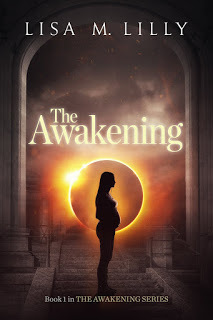
The post How Rosemary’s Baby Inspired The Awakening Series appeared first on Lisa Lilly.
How Rosemary's Baby Inspired The Awakening Series
 Rosemary’s Baby (by Ira Levin) is one of my favorite books, and it’s part of what inspired The Awakening Series.
Rosemary’s Baby (by Ira Levin) is one of my favorite books, and it’s part of what inspired The Awakening Series. It’s the kind of quiet horror that I love. The story is disturbing because of gradually building suspense and looming evil rather than blood and guts.
Other things I love about Rosemary’s Baby and how they fit with The Awakening Series (warning if you’ve never read or seen Rosemary’s Baby, there are SPOILERS below):
An Unusual Pregnancy
Tara (my protagonist in The Awakening) and Rosemary are in slightly different situations. Rosemary wanted to become pregnant, and Tara didn’t.
But they are alike, too. Rosemary wanted a baby, but not to have her pregnancy forced on her.
Tara wanted to delay having children until she finished medical school. She chose to abstain from sex, but at the beginning of the book finds herself pregnant anyway.
The two women also are similar in they’re both willing to entertain what appear to be impossible answers to the situation they find themselves in. They follow where logic leads rather than assuming they lost their minds, though others around them attempt to convince them that’s what’s happening.
Woman As Hero
Despite that on first glance Rosemary appears to be the standard “woman in peril” staple of many horror and suspense novels, she doesn’t remain a victim. Ultimately, I see her as “women as hero.” While she isn’t able to defeat the evil people around her, she is able to take control of the situation.
Rosemary figures out what happened to her friend Hutch, how her husband became so successful, and the real goals of her seemingly benign elderly neighbors. I used her as a sort of model for Tara.
Both Tara and Rosemary, once they discover their situations, do everything they can to figure out what’s happening and how to deal with it. They don’t wait for others to rescue them.
Tara trusts those around her, just as Rosemary trusted her husband and neighbors, but she reexamines everything and everyone to figure out how to survive.
Finding Her Own Way
Rosemary also is unconventional. We expect her either to be defeated or choose to end her own life and her child’s. Instead, she’s determined to find another way.
Tara, too, is unwilling to accept the choices others offer to her.
Everyone has an opinion about her pregnancy and its origin, but Tara is determined to figure out for herself what it means. Even if she likes and trusts someone (such as her mentor Nanor, founder of a woman’s community whose daughter also had a virgin pregnancy), she doesn’t accept as gospel what that person says or do what that person tells her to do.
Means and Ends
I also like Rosemary’s Baby because it features antagonists who on the surface appear ordinary and kind but whose beliefs justify, in their own minds, doing terrible things.
While the antagonists in Rosemary’s Baby hold beliefs that are generally considered to be evil, Levin makes clear that they have a deep and strong faith that they believe justifies their actions.
On the surface, they do what look like good deeds. They help a young woman hooked on drugs become sober and take her into their home, they befriend Rosemary and try to help her through her pregnancy, and they help Rosemary’s husband’s career.
All these things, though, are done to try to achieve a nefarious purpose.
On the other hand, Rosemary’s choice in the end is one that is motivated by a clear good—love for her child—yet it’s unclear whether it’s the morally correct choice given what’s at stake.
In The Awakening Series, I chose antagonists who do questionable (and sometimes criminal) things because they see it as necessary to protect the world. While Tara herself is clearly not evil, what her pregnancy means and how it happened is unknown to her, as is whether those who oppose her might, on some level, be doing the right thing.
In the end, the questions over right and wrong and the difficulties in choosing the best path when no options are clearly good is a big part of what I loved about Rosemary’s Baby and what inspired The Awakening and the later books in the series.
Haven't tried The Awakening Series yet? If you're reading this the week of February 6, 2018, it's a good time to check it out, as the e-book editions of Book 1 are free.

January 30, 2018
Found Families, Conflict, And The Road To Hell
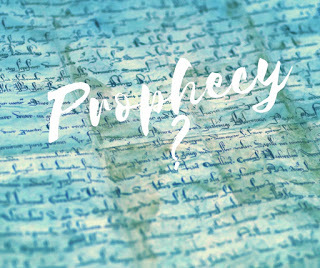 Of all her family members, my protagonist Tara’s stepdad, Pete, struggles the most with her supernatural pregnancy.
Of all her family members, my protagonist Tara’s stepdad, Pete, struggles the most with her supernatural pregnancy. When I was writing early drafts, though, Pete was so supportive that it made for dull reading.
One suggestion I got to heighten the conflict was to show Pete feeling frustrated that he was raising this child who was not “his own.”
This view would lead to him to be more impatient and disbelieving when Tara claimed to not know how she became pregnant.
That would’ve been an easy place to go for conflict, but it didn’t appeal to me.
It struck me as too expected and unrealistic at the same time. It also didn’t interest me as much as the type of internal conflict Pete ultimately faces between his faith and his love for his daughter.
Great Expectations
The idea that Pete would see Tara as not really his daughter despite having raised her from when she was three, and so would feel more impatient with her or angry at her, seemed to me to be the expected conflict and also, ironically, contrary to reality.
As far as expected goes, it fit too well with the trope of the evil stepparent (though usually that’s the stepmother). I wanted a more complex reason than that, and I also wanted Pete to be a genuinely good person and good dad, not a stereotypical type of villain.
At the same time, the cultural view that biological or blood relations are closer and have better relationships than do people not connected by biology is often not true.
Some biological families are close and supportive, and if you have that, that’s terrific. Others, though, create far more stress and pain for one another than do the friends and families people choose and create on their own.
Finding Your Family
I feel lucky to have grown up in the family I did, though particularly as a teenager and a twenty-something, I saw mainly its flaws. I took for granted the very open definition of family that my parents had and only later realized how wonderful it was.
My brothers and I were close with many of our cousins, and our extended family frequently got together. Included in that family were several longtime friends of my parents. Those people often gave me the best advice I got when I was growing up and also served as cheerleaders for me when I was struggling.
Likewise, my mom, often quite critical of her own kids and so not necessarily the first person we went to with problems, offered help and support to some of my cousins. Sometimes it’s easier to play those roles with people who are not your own parents or children.
In creating my main character Tara’s family, I wanted to reflect those complexities and reflect the fact that you won’t always connect with your family of origin.
Also, as is often the case in real life, Tara’s parents don’t have the knowledge or expertise to help her deal with what she needs to face. She must seek that elsewhere.
I liked exploring those other relationships Tara forms.
I also liked showing that her parents could grow and change when challenged with a difficult — actually, an unbelievable — situation, and that the parent/child relationships could evolve.
The Road To Hell
The saying about the road to hell being paved with good intentions stuck in my mind as I created Pete, though I don’t see him as going to hell by any means. (I also always remember an Ernest Hemingway character saying the road to hell was paved with unbought stuffed dogs, but that’s an entirely different article.)
In Pete, I created a character with deep faith in the Catholic Church. Pete grew up all over the world because his father was in the military. Catholicism was an anchor in his life. When he went to mass, no matter what language was spoken, he understood went to sit or stand or kneel and what was happening.
(I drew that part of Pete’s background from a visit to a church in Florence when I was traveling alone. I went in to see the architecture but stayed for a mass. Despite not knowing Italian, I could follow everything because it was the same pattern, prayers, and even songs that I had grown up with. Though no longer religious, I found it comforting to take part in the familiar ritual while in another country.)
As the possible meanings of Tara’s pregnancy are explored, it raises huge questions, fears, and doubts for Pete. He fears that there is some evil component to it that will hurt his daughter and challenge his faith, and he fears the child is meant to overturn the current order and undermine the Church. He also fears that his daughter has been gripped by some type of mental illness characterized by religious mania.
Pete struggles with all those fears, but what he’s really struggling with are two strong and opposing values that mean a great deal to him.
The first is supporting his child and trusting her judgment, and the second is being true to his faith and the church.
That’s exactly the type of conflict I find most compelling for a character.
Of course, I couldn’t have Pete simply sit around and think about these things, so in Book 2, The Unbelievers, he is forced to go on a quest with Cyril, whom he doesn’t trust and who behaved terribly toward Tara, to try to recover part of an ancient prophecy that may help both Tara and Pete figure out what’s going on. (Now there’s a run-on sentence.)
If you haven’t checked it out yet, you can find TheUnbelievers here in paperback, ebook, and audiobook editions.
January 24, 2018
Snakes, Trees, And Former Nuns: Creating The Cloister For The Awakening Series
 I use a lot of real places—like the St. Louis Arch and a student hotel in Yerevan, Armenia—as settings in the Awakening Series.
I use a lot of real places—like the St. Louis Arch and a student hotel in Yerevan, Armenia—as settings in the Awakening Series.My favorite setting, though, is one I created: a former chapel known as the cloister.
Danger looms there in Books 2 and 3 (no worries, no major spoilers below).
A news report about snake handling, a visit to Pennsylvania, my family history, and a garden near the Art Institute in Chicago inspired it.
Hidden PlacesMy dad grew up in Pennsylvania. One of my favorite things to do as a kid, despite that it was a 12 hour drive, was to visit my aunts, uncles, and cousins there.
As an adult, after my parents died I traveled to Loretto, Pennsylvania, for an extended family reunion.
 While there, we visited the gardens of a nearby church. I was particularly struck by a giant beautiful tree with branches that stretched everywhere.
While there, we visited the gardens of a nearby church. I was particularly struck by a giant beautiful tree with branches that stretched everywhere. You can’t quite see its scale in this photo, but it stayed sharp in my memory.
So much so that when I wrote The Unbelievers four years later, similar trees played a significant part in creating the atmosphere of the courtyard in the cloister.
Calling the former chapel "the cloister" also came from my family history.
One of my dad’s aunts was a nun, and as a kid I heard my mother talking about cloistered nuns. The word means hidden, and I was intrigued by this idea of a hidden place where people lived.
When I needed a group of people, possibly foes but possibly allies, who would guard secret information passed down for thousands of years that my main character Tara needed, a place known as the cloister seemed like a perfect setting.
Trees At The Art InstituteHow the tree I’d seen in Pennsylvania would play into my story didn’t become clear to me until four years after I'd seen it.

I was walking along Michigan Avenue in Chicago and passed the Art Institute, something I’ve done hundreds of times. For the first time, though, I wandered into the garden on the south side of it.
That particular garden features hawthorn trees. In the photo above they have leaves, and their top branches wind into one another.
I created a courtyard for the cloister that was filled with hawthorn trees, which I learned do grow in the mountains in Pennsylvania. Because the cloister is in the mountains, and it's above the snow line, the tree branches look stark against the snow as they wind together in an eerie, foreboding way.
Snakes And SerpentsWhile I was plotting The Unbelievers, I happened to see a television news show about a preacher who died while engaging in the religiouspractice of snake handling.
The concept is that someone with true faith can handle a poisonous snake without being bitten, or if the person is bitten, he will be healed through faith.

It’s based on New Testament verses in Mark saying that apostles will pick up snakes and that if they drink deadly poison it will not harm them. According to my research, the practice began in the Appalachian Mountains, so it fit with the location of my cloister.
I didn’t end up using snake handling directly in the books, but, fair warning, snakes play a role.
A lot of snakes.
----For more on The Awakening Series, stop back next Wednesday, or sign up for bonus materials for the series.
January 17, 2018
How Stories About Mary Influenced The Awakening Series
 Collyridians supposedly offered fresh-baked bread to Mary.Last week I wrote about the inspiration for the fringe religious order that plagues my main character, Tara, throughout The Awakening Series.
Collyridians supposedly offered fresh-baked bread to Mary.Last week I wrote about the inspiration for the fringe religious order that plagues my main character, Tara, throughout The Awakening Series.Research and reading into traditional and controversial beliefs about the Virgin Mary also influenced The Awakening, though Tara's journey diverges widely from Mary's.
(For one thing, Tara's not religious, and the series is not a religious series. Also, so far as I know, there are no stories about an apocalyptic cult threatening Mary, which would have turned that part of the New Testament into a thriller, probably not the goal of its authors.)
Pure And Perfect?
In the Catholic Church in particular, Mary is viewed as "pure," "perfect," and "immaculate" because she's seen, paradoxically, as both a mother and a virgin. As a child, I assumed those beliefs stemmed from the New Testament, but there's relatively little there about Mary.
There was a lot to explore on those themes.
What if a young woman didn't see sex that way and had abstained for other reasons and found herself pregnant? What if she rejected people who tried to see her as "pure" and believed she'd give birth to a messiah?
Mother of God?
The Catholic Church granted Mary the title “Mother of God” about 430 years after Jesus was born.
The Church believed she deserved the title because she'd given birth to the human Jesus, whom the Church came to believe also was God.
This belief played into the next doctrine, that of Perpetual Virginity.
Perpetual Virgin?
Later, under a doctrine known as Perpetual Virginity, the Catholic Church decided that Mary not only was a virgin when she gave birth to Jesus, but she remained a virgin throughout her entire life.
This doctrine surprised me when I learned about it. The logical reason for those who see Jesus as God to believe Mary was a virgin before Jesus' birth was to show that his "father" was not human but divine. (A point Tara's mentor, a former nun and professor makes.)
But this doctrine makes a clear equation between sex and being impure--and equates perfection for a woman with abstaining from sex.
Contrary Views
Not all early Christians believed Mary was a virgin when Jesus was born, however, let alone that she remained one forever.
The Ebionites, a Jewish-Christian sect that believed in a non-divine messiah, believed that Jesus was conceived the usual way, through sexual intercourse. Later, they changed position to say that Jesus was conceived through the Holy Spirit, but still believed that after the birth of Jesus, Joseph and Mary engaged in sexual relations and had many children.
Excommunication
The Catholic Church rejected both views.
The Church declared heretical any belief that Mary had sexual intercourse ever, including after Jesus was born. (A heresy is a belief at odds with what Catholics must believe to be considered Catholics. Heretics are barred from the Church.)
The early Church felt so strongly about Mary remaining a virgin forever that it labeled those who held the belief that she had sexual intercourse after the birth of Jesus “Antidicomarianites”—opponents of Mary.
Collyridians, another group the Church declared heretics, went too far the other direction from the Church's standpoint. They worshipped her as divine. Most of what's known about them comes from a Bishop who denounced them. The group, mostly women, offered bread to Mary.
(I borrowed from this lore when I envisioned a former chapel where Tara seeks sanctuary in Books 2 and 3, The Unbelievers and The Conflagration. The table in the main room features baskets of homemade bread.)
Tara's Allies
From what I could tell, the early Church viewed these two groups as opposites--one group that saw Mary as, perhaps, too human in that she had sexual intercourse, and the other that saw her as divine. I found that intriguing, as it suggested a lot about how that religion saw women.
I also found these groups intriguing because, as with the two Andrews of Crete I wrote about last week, there was little information out there. That gave me a lot of room to take poetic license with how and whether to fit them into my story.
In case you haven't yet read the series, I won't go into detail on what role the Antidicomarianites and Collyridians play, other than to say that references to them did make life more challenging for Shiromi Arserio, the producer/narrator of the audiobook editions.
I hope you'll stop back next Wednesday for more on The Awakening Series. You can get bonus materials for The Awakening Series, including deleted scenes, here.
January 9, 2018
What's Real And What's Not: Creating The Brotherhood of Andrew (Antagonist For The Awakening Series)
What if a (non-religious) young woman today claimed she was pregnant but had never had sex? What if a traditional religious group became convinced she would give birth to a messiah, but then learned the young woman's child would be a girl?
While each of the four books in The Awakening Seriesfeatures a specific individual character as the antagonist, the real antagonist for the entire series is that religious group, the Brotherhood of Andrew of Crete.
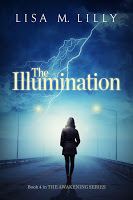 The fourth and final book, The Illumination.The Brotherhood needed to be traditional and Christian Order so its members would believe in the story of the Virgin Mary and would be shocked at the idea of a potential female messiah.But I didn't want the Order to be part of an actual, specific branch of Christianity.
The fourth and final book, The Illumination.The Brotherhood needed to be traditional and Christian Order so its members would believe in the story of the Virgin Mary and would be shocked at the idea of a potential female messiah.But I didn't want the Order to be part of an actual, specific branch of Christianity. As the antagonist, the Order would do things that from my main character’s perspective (and probably the reader's perspective) were evil. I didn’t want to associate that with a real religion or suggest any actual religious group was wrong or evil. That’s why throughout the books, Brotherhood members refer to concepts that come from many different religious traditions. I also wanted The Brotherhood to have a saint around which to coalesce because that would make their beliefs more concrete. My criteria for the saint included:
(1) being devoted to the Virgin Mary so that the saint was logically connected to The Brotherhood’s apparent mission of looking for signs of a new messiah
(2) dying as a martyr, as that foreshadowed danger and raised the stakes of the story
(3) having lived 600-800 years after Jesus Christ was reportedly born so that beliefs about Jesus were in flux and so the saint could not possibly have personally known Jesus or Mary
(4) not being well known so that I could take a lot of dramatic license in creating whatever back story I needed
I found two saints who met these criteria and who conveniently shared a name – St. Andrew.
Interestingly, both were associated with Crete. I liked having a saint from that part of the world because I planned to set some of the story in nearby Armenia, a place I’d traveled to and found fascinating because of its history as having become the first country to name Christianity as its official religion.The martyr Andrew of Crete was executed around 767 A.D. (or C.E. for Common Era, as is more commonly used now in academia) because he defended the honoring of icons – religious images – of Jesus.
He also had a monastery dedicated to him, the Koca Mustafa Pasha Mosque in Istanbul. (That has an interesting history in itself which I’ll write about in a future post.)While I didn’t find any particular connection between the martyr Andrew of Crete and the Virgin Mary, the other St. Andrew of Crete was known for composing and singing hymns to her. That St. Andrew was ordained a deacon at the Hagia Sophia (a location I also used in the series). In 692 he was made an archbishop on the island of Crete.
I combined these two St. Andrews into Brother Andrew, a saint to whom my fictional Brotherhood of Andrew of Crete is devoted. I added that Brother Andrew had visions about future women like the Virgin Mary and handed down a prophecy about such women and the danger to the world if events surrounding the prophecy went wrong.
Not all of this back story about Brother Andrew ended up in any of the books in the series, but I feel knowing it made my storytelling more layered.If you’d like to know more about the two St. Andrews, you can check out the websites below. (Fair warning if you're writing a paper on one of the Andrews and came across this article: Because I was writing fiction, I didn't make sure all my sources were well-researched and documented. I only needed enough to provide a jumping off point for my story.)
PopFlockCatholic Online OCA (Orthodox Church in America)Catholic News AgencyBartleby.comAcademic Dictionaries and EncyclopediasOrthodox Christian
As the story grew and changed with each book, I made tweaks to the structure of The Brotherhood, to who was in charge, and to how much each member knew about its goals. I did that both to keep it a formidable adversary and to leave room for the people within it to grow and change.
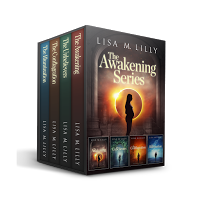
If you haven't yet finished (or started) The Awakening Series now's a great time to check it out, as the series is now complete and is available in ebook, audiobook, and paperback editions. Also, as I write this, the ebook editions of Book 1, The Awakening, are all free.
Or read the entire series in the box set/omnibus edition.
December 4, 2017
Choose The Top Fantasy and Science Fiction Cover of 2017

We're not supposed to judge a book by its cover.
All the same, I'm really pleased that the cover for The Illumination, the fourth and final book in my Awakening supernatural thriller series, was included in Kobo Writing Life's 10 Finalists for the Best Science Fiction and Fantasy covers of 2017. (Thank you to cover designer Chrissy from Damonza!)
This poll also reminded me of a book I've been waiting for: Map of Shadows by J. F. Penn. I love Penn's London Crime Thriller series, and I'm excited to branch out into reading her other fiction. I also plan to check out the 8 other authors whose book covers are in the Top 10.
You only have until 5 p.m. Eastern Time on December 7 so hurry and vote for your favorite cover today!



